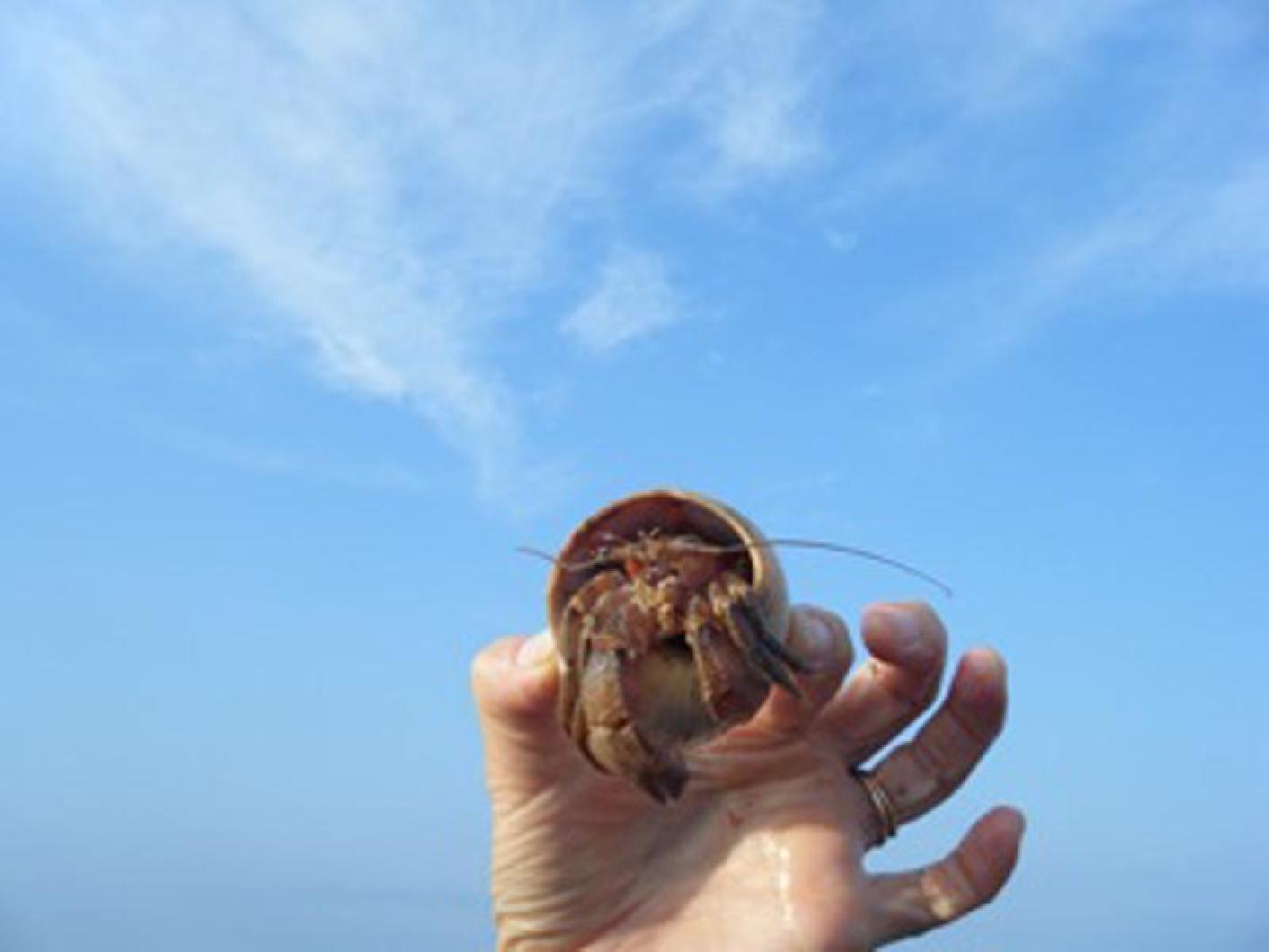The housing crisis affects us all.
While the ups and downs of the Island real estate market are not a major concern for these crustaceans, they do have their own domicile dilemma. A version of the Vineyard shuffle is undertaken by hermit crabs year-round.
Hermit crabs are always destined to be renters, but never owners. They cannot make their own shells and rely on the availability of others’ shells for habitat and protection. Empty gastropod shells are the crabs’ preferred accommodation; they will inhabit salvaged seashells left by periwinkles, mud snails, moon snails, whelks and oyster drills. Hermit crabs will never forcefully eject the original occupant; peaceful reclamation is their preference and, ultimately, their safety net.
Hard on the outside and soft on the inside describes the naked hermit crab. Its head and thorax, which stick out of its borrowed shell, have a rigid exoskeleton. Inside of the shell, find the hermit crab’s super soft spirally curved abdomen which lacks that hard coating and thus needs a borrowed shell for protection. At the base of this abdomen are two pairs of uropods, hook-like limbs that grip and anchor the animal to its resident shell.
Protruding out of the shell are the crab’s walking legs and claws for locomotion, protection and feeding. Often one claw is bigger than the other and will serve as a shield to prevent outside invaders from getting in. All of these appendages are also replaceable, since hermit crabs can regenerate limbs.
A permanent address is not in the stars for hermit crabs. As they grow and molt, hermit crabs will need to find larger shells to accommodate their growing bodies. They will check a new shell for fit, weight and mobility and will reject shells if their specifications are not met. In some cases, when there is a dearth of appropriate shelters, hermit crabs will fight each other for the best ones. However, in more cases than not, they help each other find shelter.
Social networking seems to be alive and well and thriving in hermit crab populations. Hermit crabs are communal animals, preferring to mix and mingle with others of their own type, so hermit is therefore a bit of a misnomer. It is not uncommon for these crabs to live in groups of up to 100 individuals, practicing an interesting form of house-hunting.
Musical chairs, or in this case musical shells, describes their behavioral phenomenon called synchronous vacancy chain. When one hermit crab finds a larger shell that isn’t just right, it stays near the shell until other crabs join it. As the crowd of crabs grows, they arrange themselves in size order near the new shell. One crab will wiggle into the new shell and the rest down the line will move to the next size up, much like a line of dominoes.
All is well in this condo association when everyone finds their perfect home. Until, of course, the next growth spurt forces another mass relocation. It is good that these crabs travel light and don’t get too attached to their apartments. They must know that ultimately home is where the heart is.
Suzan Bellincampi is director of the Felix Neck Wildlife Sanctuary in Edgartown.





Comments
Comment policy »